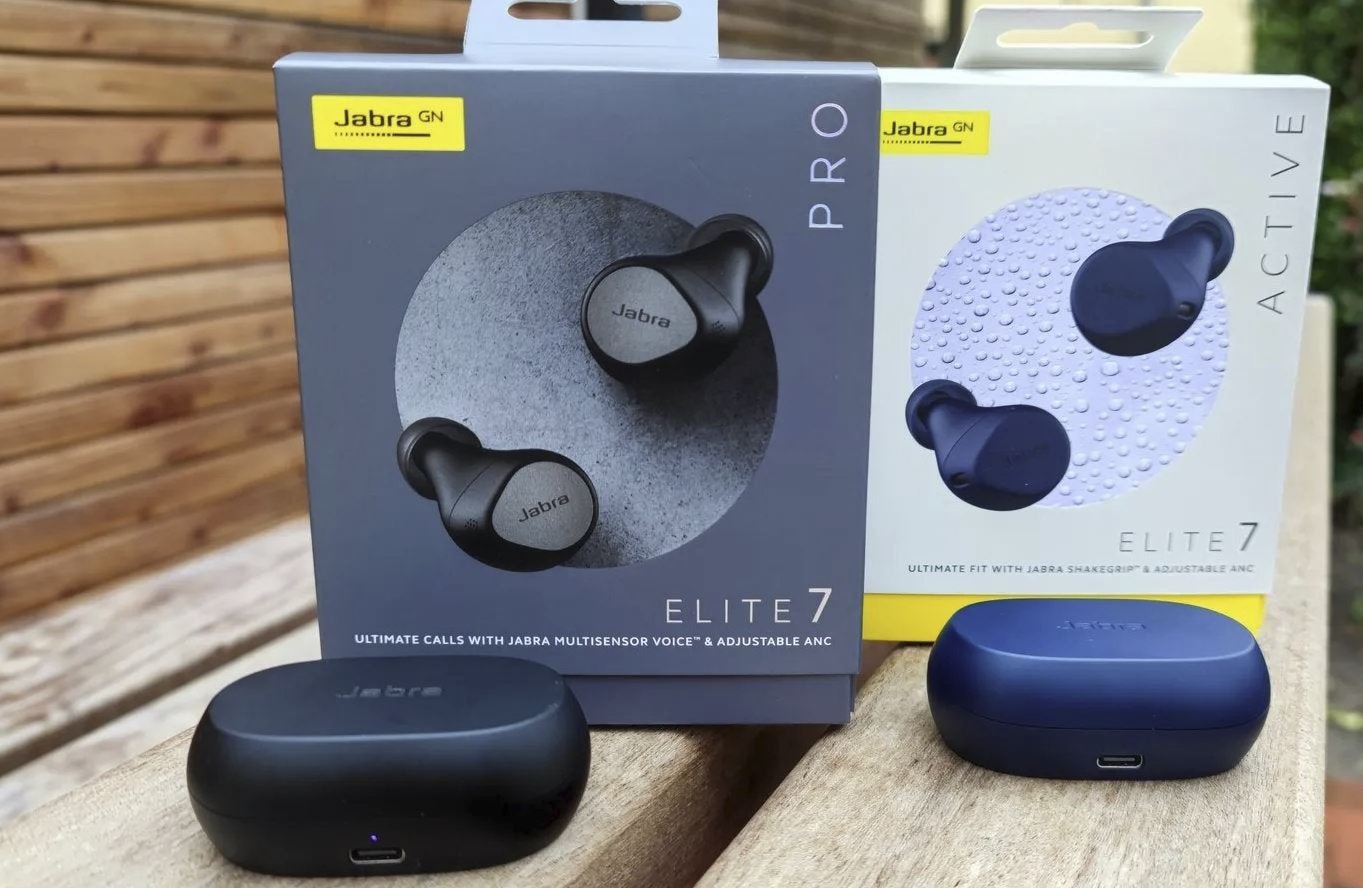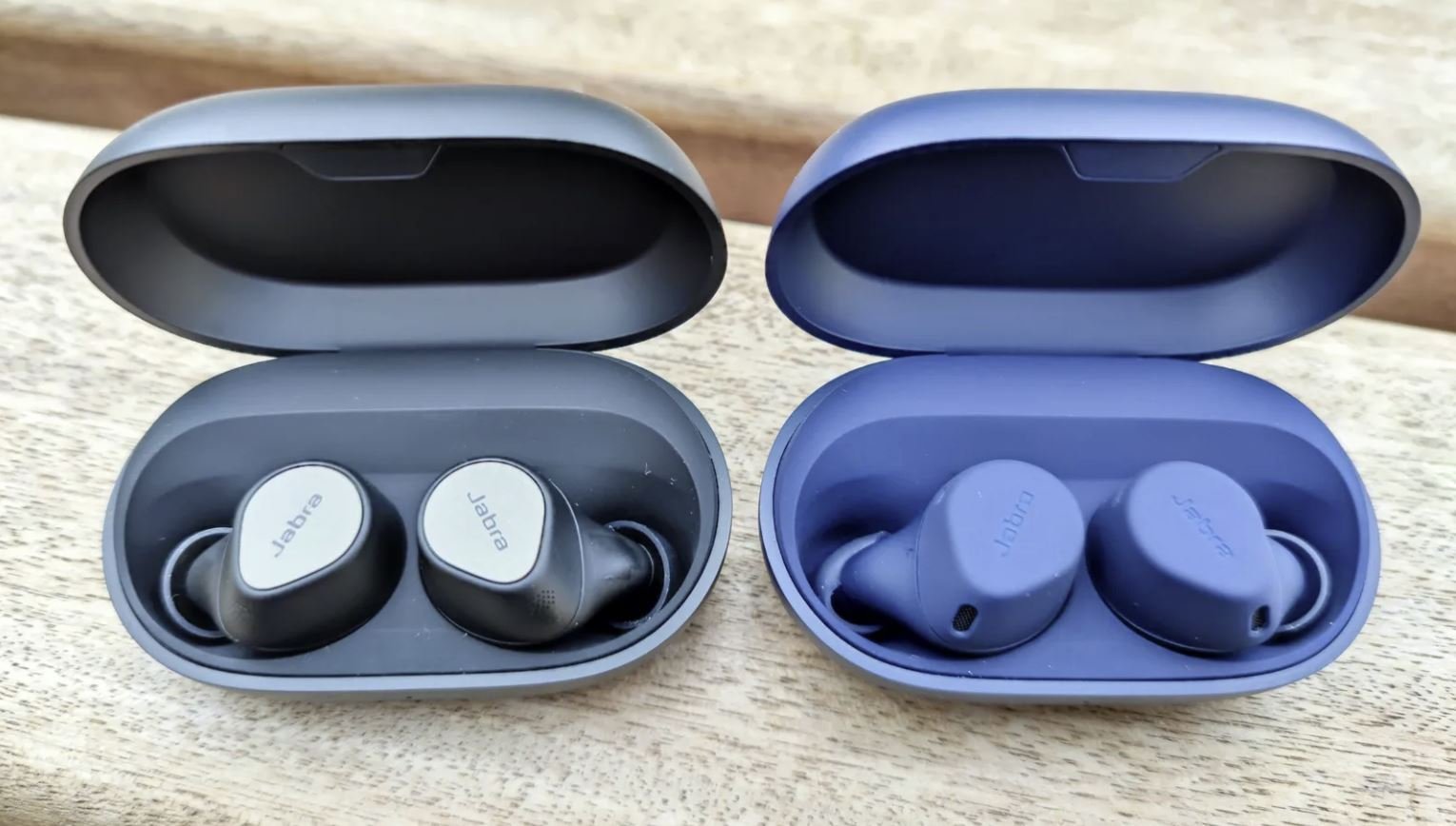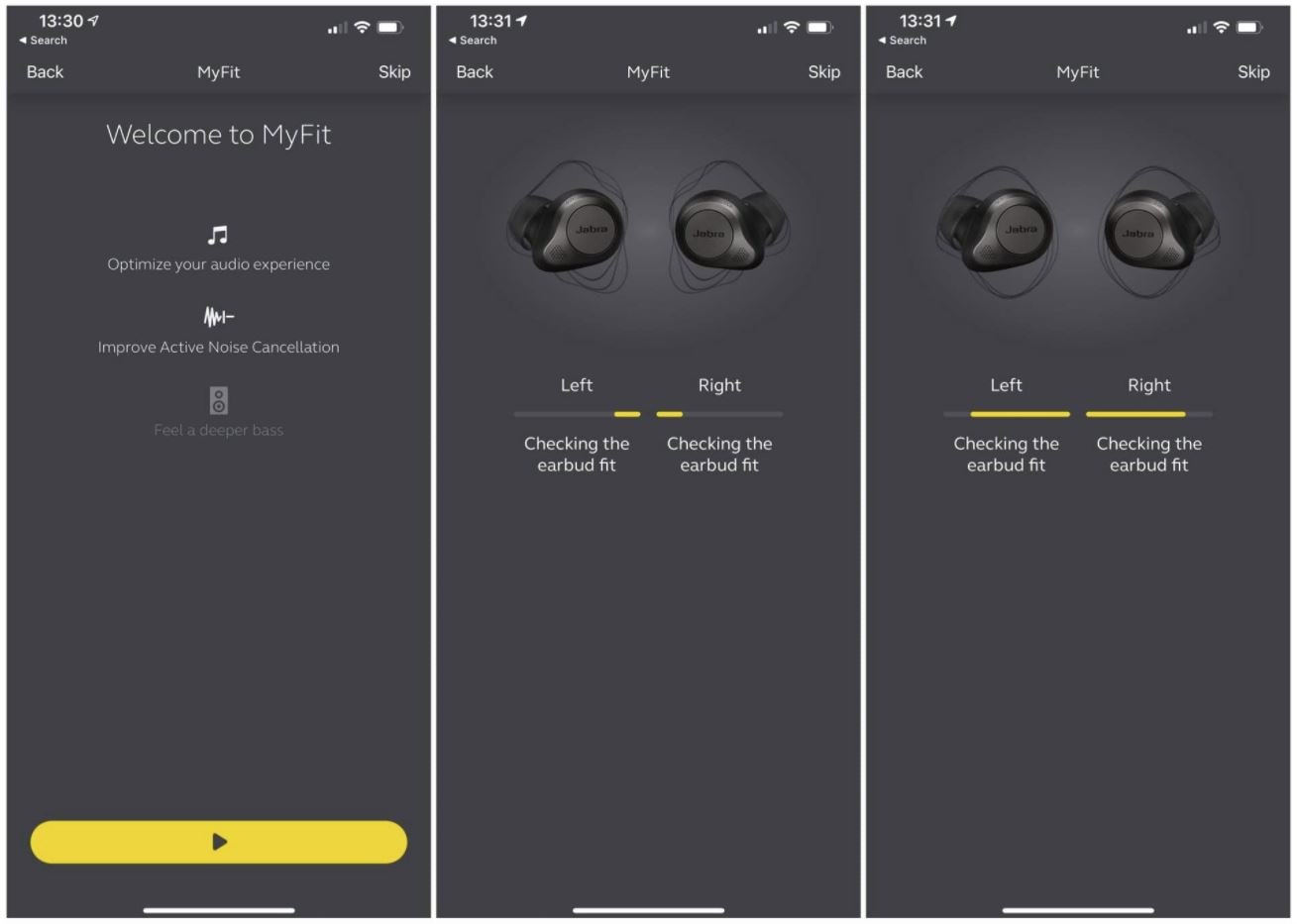The Danish manufacturer Jabra was, alongside Apple, one of the first providers of TWS (True Wireless Stereo) headphones. This refers to earbuds that can do without cables. In the meantime, we have got used to it, because TWS headphones are available for prices between 50 and 100 USD. But with the two models Jabra Elite 7 Pro and Elite 7 Active, the Danes are aiming a little higher.
Pros and Cons
| Jabra Elite 7 Pro | Jabra Elite 7 Active |
| Excellent audio quality | Excellent audio quality |
| Exceptional fit and comfort | Exceptional fit and comfort |
| Excellent call quality | Excellent durability |
| Color alternatives are not nice | Call quality is not good |
The technical data of the Elite 7 Pro and Elite 7 Active are very similar. The differences are in the details: The Active model has a special coating that improves resistance to sweat and strengthens the hold in the ear, according to Jabra. As the name suggests, the Elite 7 Active is intended for athletes. For the first time and exclusively for the Pro model, a completely new feature is available: If there is loud wind noise, a bone conduction sensor can switch on during phone calls and improve the call quality. Here the voice is transmitted utilizing the vibrations in the jawbone.

Specification
| Jabra Elite 7 Pro | Jabra Elite 7 Active | |
| $ | CHECK PRICE | CHECK PRICE |
| Model | Elite 7 Pro | Elite 7 Active |
| Weight | 5.4 g | 5.5 g |
| Released | October 3, 2021 | October 3, 2021 |
| Dimension | 6.3 x 4.61 x 1.46 inches | 6.22 x 4.45 x 1.57 inches |
| Type | In-Ear | In-Ear |
| Foldable | No | No |
| Colors | Black, Gold beige | Mint, Navy, Black |
| Frequency Response | 80 – 8,000 Hz | 80 – 8,000 Hz |
| Driver | 6 mm | 6 mm |
| Speakers | Stereo | Stereo |
| ANC | Adjustable ANC | Adjustable ANC |
| Waterproof | IP57 | IP57 |
| Detachable | No | No |
| Controls | Yes | Yes |
| Bluetooth | 5.2 | 5.2 |
| Codecs | AAC, SBC | AAC, SBC |
| Software/Apps | Jabra Sound+ | Jabra Sound+ |
| Battery | Lithium ion | Lithium ion |
| Battery Life | Up to 8 hours | Up to 8 hours |
| Charging Port | USB-C (wired) Qi (wireless) | USB-C (wired) Qi (wireless) |
As you can see, the other technical data are identical. So it boils down to this: If you want to make a lot of phone calls with the earbuds, even on the go, then the Jabra Elite 7 Pro are the better choice because of the additional bone-conducting technology. On the other hand, you need to use the earplugs for sports, then it makes sense to use the Elite 7 Active.
Design

Despite improved technology, the Elite 7 Pro and 7 Active are smaller than the Elite 75t, the most compact TWS model from Jabra to date. If you unpack the headphones simultaneously, you can, of course, immediately notice that the Elite 7 Pro looks a bit more elegant. For this, the Elite 7 Active has the “ShakeGrip,” a special silicone coating that looks a bit more valuable to the touch and is supposed to provide more grip during sport.
It should be noted that neither the Elite 7 Pro nor the Elite 7 support Active LDAC or aptX – although the latter is available in the cheaper Jabra Elite 3 model. This is probably because Jabra does not buy anything “off the shelf” and has developed a lot of hardware and software itself from scratch. From my point of view, LDAC would now be quite popular in this price range – for example, Anker is currently pushing ahead with its Soundcore models.
The shape of the Elite 7 is similar to the Elite 3. This means that the earbuds are more compact and should therefore also sit better. The surfaces of the earbuds are haptic control panels. Within the Jabra Sound + app, you can customize what one or more keystrokes or a long press does. Depending on the setting, you can switch ANC and HearThrough on and off, skip songs, call up voice assistants or accept or reject calls via the control panels.
You can do this wirelessly via Qi if you don’t want to charge the charging cradles via USB-C. There is a multi-colored LED on the front of the cases. It tells you in terms of color about the charge level of the earbuds or the shell or flickers z. B. purple when an update is in progress. You can trigger the latter via the said companion app. Overall, it’s all pretty straightforward. The Jabra Elite 7 Pro and Elite 7 Active look well processed.
Comfort
The comfort of Elite 7 Pro and Elite 7 Active is pretty much the same. Both are very comfortable to wear and yet, in my case, sit more securely than previous models such as the Elite 85t. While running, it turns out that Jabra is not kidding: the Active model sits much more immovably in the ear due to its coating. Thanks to the new shape, I can go jogging with the Elite 7 Active without constantly readjusting. However, you still cannot achieve the perfect fit that I know from Elite Sport. Either way, take the time to try out different ear tips. You may also need various sized attachments per ear.
The earbuds come with 3 different ear tips. Jabra has integrated a feature called MyFit into the app. The headphones are buzzing a bit, and sensors check whether the headphones are sitting well. If the result is negative, the application recommends readjusting or changing the ear tips. In general, Jabra Sound + has many functions. However, some could be better explained. For example, you have the option of personalizing the ANC (Active Noise Canceling) using a controller or even creating it differently on the left and right. However, Jabra does not explain what precisely the controller sets primarily since this adjustment can only be carried out if you are currently in a noisy environment.

According to Jabra, they developed it in-house and not bought it like many other manufacturers. The aim is to achieve remarkably accurate results. Of course, Sound + also offers you an equalizer with several presets and the opportunity to personalize it manually. The HearThrough mode, on the other hand, uses the microphones to amplify ambient noise specifically. For example, you can hear announcements at a train station without taking your earbuds out of your ears.
If you like, you can also use the Jabra Elite 7 in mono mode. To do this, put the earbud that you don’t want to use back into the charging cradle. Otherwise, the music will automatically pause if you take one or both earbuds out of your ear. If you put it back in, it will continue from the same point. You can also set up whether you want to hear your voice during a call via the earbuds or how loud it should be. There is even an equalizer for calls. The features are already strong.
Sound
In terms of sound, the verdict on the Elite 7 Pro and Elite 7 Active is made very quickly: Both earbuds suffer a bit from the small 6 mm drivers and the lack of high-quality codecs, but they deliver a good sound thanks to the customization options. If I compare it with the Elite 85t, I have the subjective impression that the bass is more present in the previous model. Otherwise, the quality achieved is very similar, which is surprising given the significantly smaller drivers. In the heights, however, more should be possible here too.
ANC and phone calls- When it comes to ANC, the Jabra Elite 7 is not necessarily at the top. Unfortunately, even with my adjustments using the slider, I could not achieve optimal results. So you play at the same level as the Elite 85t, maybe even a little below. Competitors like Bose or Sony are better here.
When it comes to phone calls, Jabra has always been ahead of the previous models. Here the Danes benefit from the fact that they manufacture headphones for business customers and thus have a lot of experience adapting headsets for complex scenarios. Jabra is now promoting the new bone conduction sensor of the Pro model as an advantage, which the Active counterpart lacks.
The result is that both the Elite 7 Pro and the Elite 7 Active are equally great for calls. So far, however, I have not been able to determine the significant quantum leap brought about by bone conduction technology. Incidentally, the Elite 7 does not yet support multipoint connections. Jabra wants to submit an update later.
Conclusion!
The Jabra Elite 7 Pro and 7 Active are perfect in-ear headphones, but they only reach the top positions in one class. There are better competing models (e.g., from Sennheiser) for sound, and in the ANC area, Bose, Samsung, and Sony are ahead. Telephone calls remain the prime discipline. This is not to say that the sound and ANC are bad. But other manufacturers are currently better at that. To do this, Jabra has improved ergonomics with the new generation. It’s a shame that the speaker drivers had to shrink as a result.
Even if the Elite 7 Pro with bone conduction technology is supposed to offer the best call quality in wind and weather, I could only determine minor differences to the Elite 7 Active. Therefore, the latter is my favorite because they look more rustic but score points with their coating in terms of touch and better fit. If the Jabra Elite 7 irritates you, then I can recommend the Active version a bit more.
However, I would like Jabra to provide LDAC support for a successor model and perhaps find a way to install more significant drivers despite the compact dimensions. However, according to the current state of affairs, the two Elite 7 models are excellent in-ear headphones, especially phone calls.


